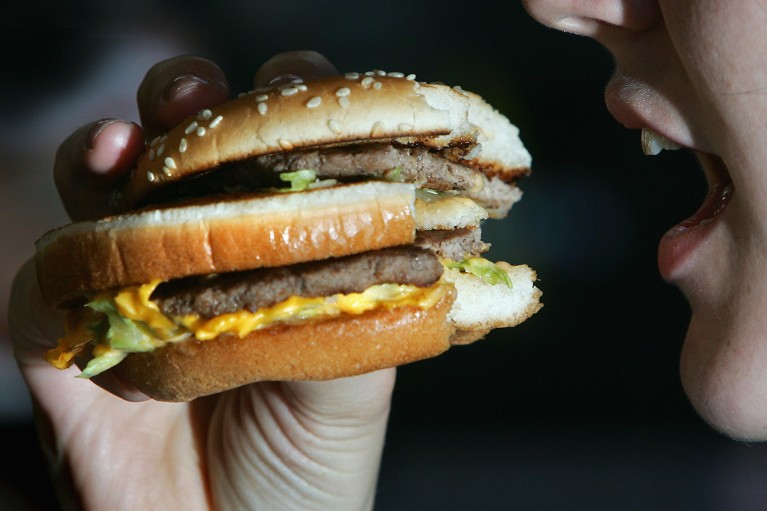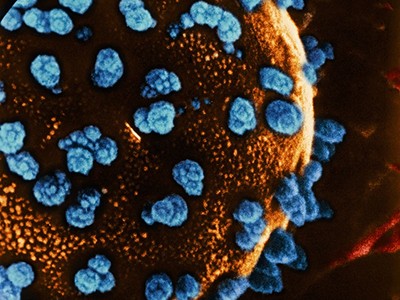
Eating a high-fat diet is a risk factor for diabetes.Credit: Cate Gillon/Getty
People with obesity are ten times more likely to develop diabetes compared to lean people. Researchers trying to understand why have found an answer in the same system that drives the body’s fight-or-flight response. The findings1, in mice, challenge long-held assumptions about how eating too much can make you sick.
The study suggests that consuming a high-fat diet triggers a surge of neurotransmitters across the body, leading to the rapid breakdown of fatty tissue in the liver — a process usually kept in check by the release of insulin. The liberation of high levels of fatty acids is linked to a host of health conditions, from diabetes to liver failure2.
Stem cells reverse woman’s diabetes — a world first
Researchers previously thought that the main problem in obesity-driven diabetes was faulty insulin activity, which means that the body cannot stop the dangerous release of fatty acids. But “instead of the breaks not functioning”, the latest study finds that there is a separate lever — neurotransmitters in the liver and other tissues — pressing hard on the accelerator, says Martina Schweiger, a biochemist at University of Graz, Austria. “This is indeed a paradigm shift.”
The study was published in Cell Metabolism on 21 October.
Insulin resistance
More than 890 million people worldwide have obesity, which is a major risk factor for developing diabetes and other metabolic disorders. Researchers have long known that the disease progresses when insulin stops reducing glucose levels in the blood. Christoph Buettner and Kenichi Sakamoto, both physiologists at Rutgers University in New Brunswick, New Jersey, and their colleagues, wanted to better understand the nature of this insulin resistance.
Buettner had been studying the role of insulin in the brain in regulating metabolism for a long time3, so he and his team turned their attention to the sympathetic nervous system, which delivers neurotransmitters such as norepinephrine to tissue all over the body. The researchers used a mouse model that they had previously developed, in which they deleted a gene that expresses a key enzyme required to produce these neurotransmitters. The gene was deleted in only the mouse’s limbs and some organs, not its brain, to ensure it could survive.
The researchers gave the modified mice a diet rich in fats such as lard, coconut oil and soybean oil. During more than two months of observation, both modified and unmodified mice ate just as much food, gained similar amounts of weight and maintained similar insulin signalling activity, which is the cascade of events that takes place after insulin binds to its target receptor on a cell.
But the modified mice didn’t have an increased breakdown of fatty tissue and insulin resistance and ultimately didn’t show increased signs of fatty liver and tissue inflammation. The unmodified mice, on the other hand, developed insulin resistance, which can lead to diabetes. They also showed increased signs of inflammation and liver disease.
Signals in the brain
The findings suggest that neurotransmitters are responsible for driving insulin resistance, and associated problems, says Buettner. He and his colleagues are now exploring the role of these neurotransmitters in other conditions, such as insulin resistance caused by menopause.
“This study is pretty solid,” says Schweiger, but “there are still some missing puzzle pieces”. For example, the question now is how the high-fat diet triggers the surge in neurotransmitters, she says.
She also says that more work is needed to better understand the implications of the findings for people. So far, drugs that block the activity of neurotransmitters involved in the sympathetic nervous system have not shown benefits in people with obesity. It’s possible that targeting these drugs in specific tissue, and avoiding the brain, could be more promising, says Buettner.



